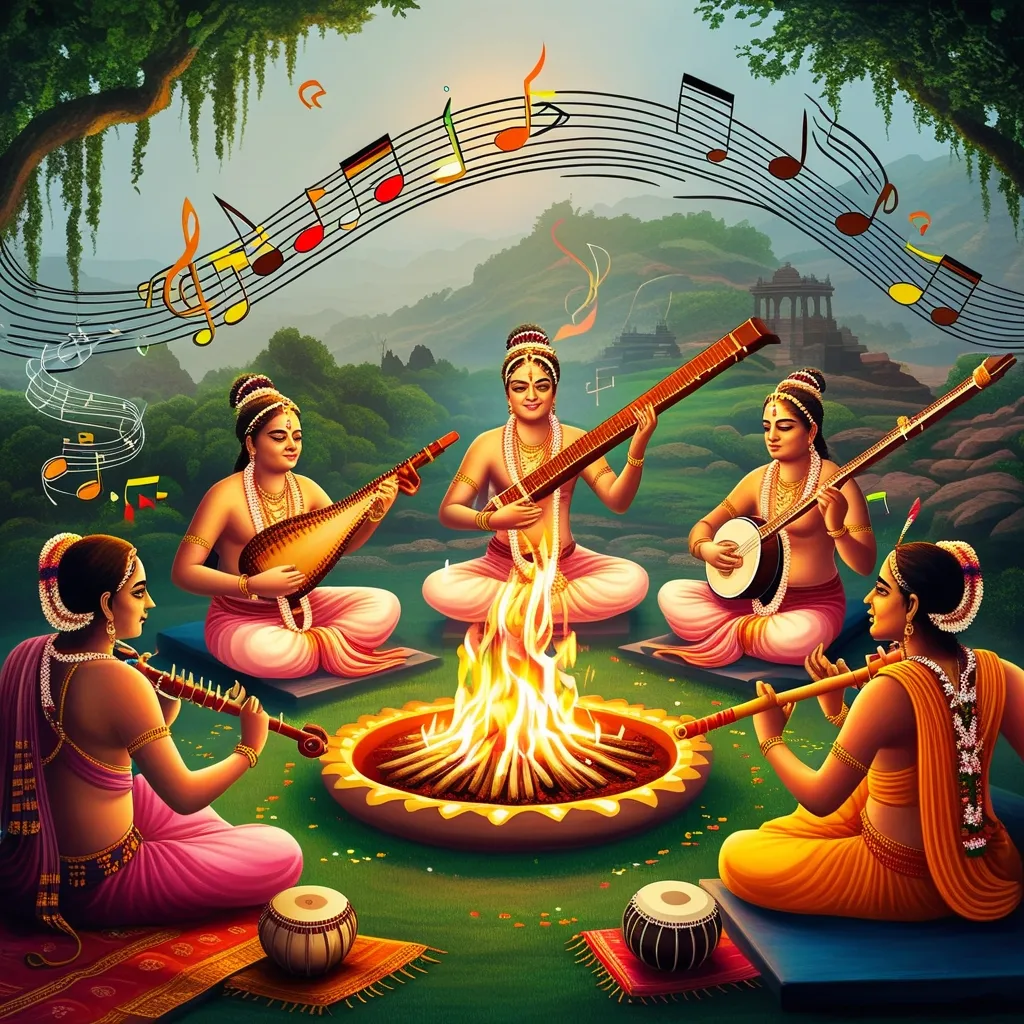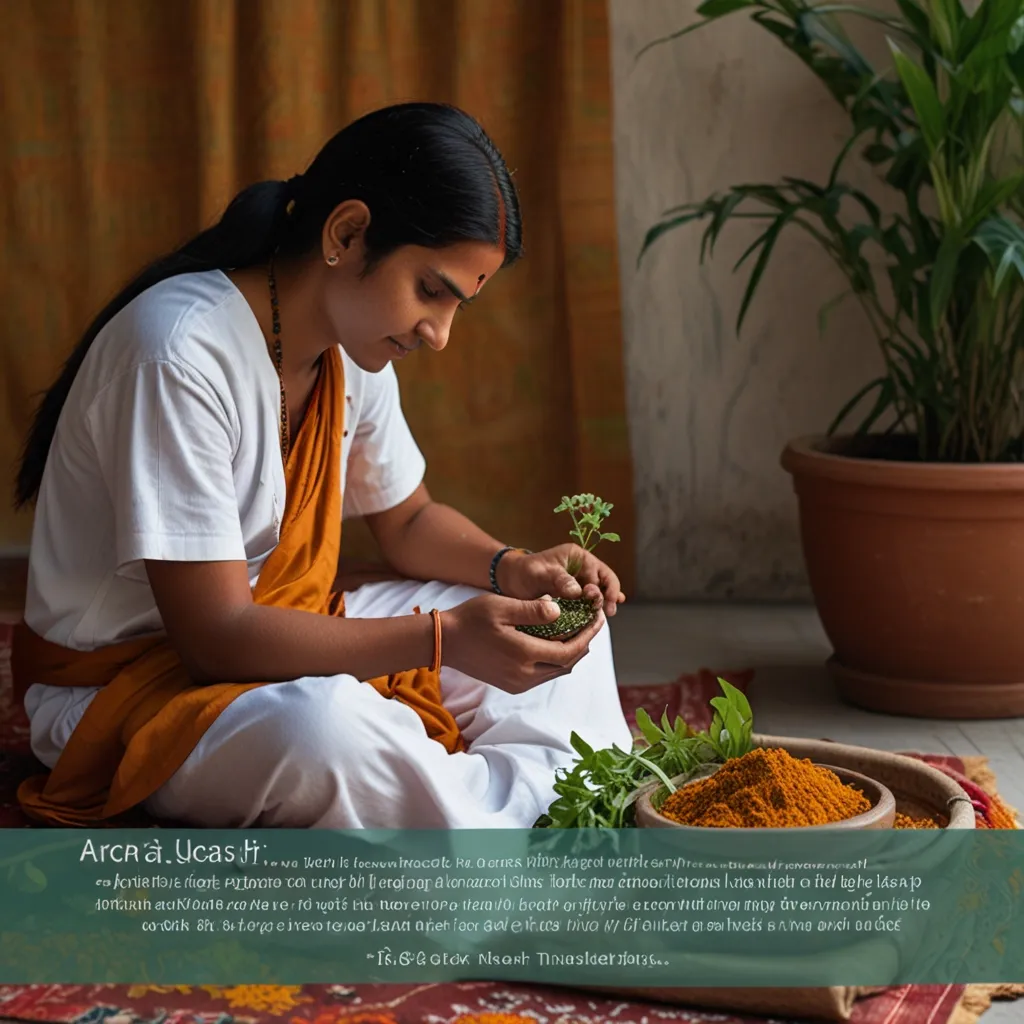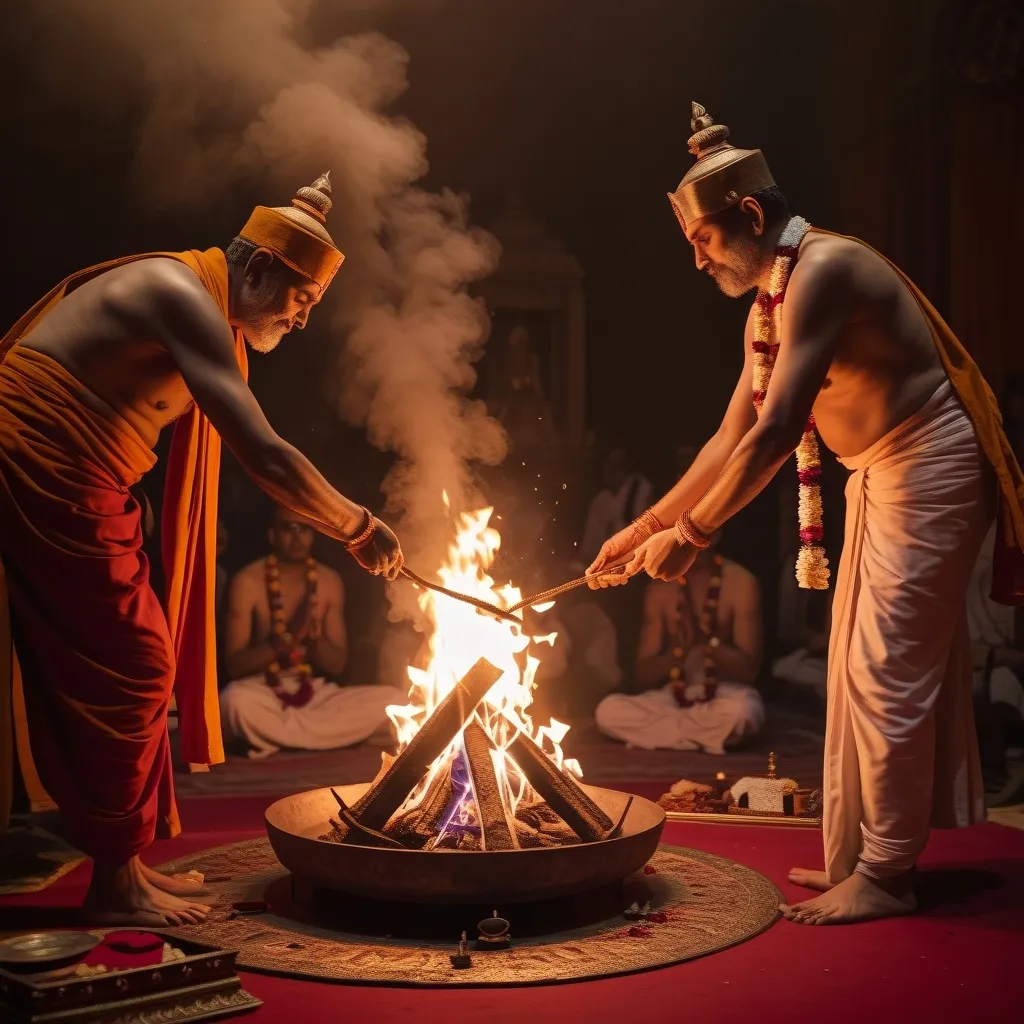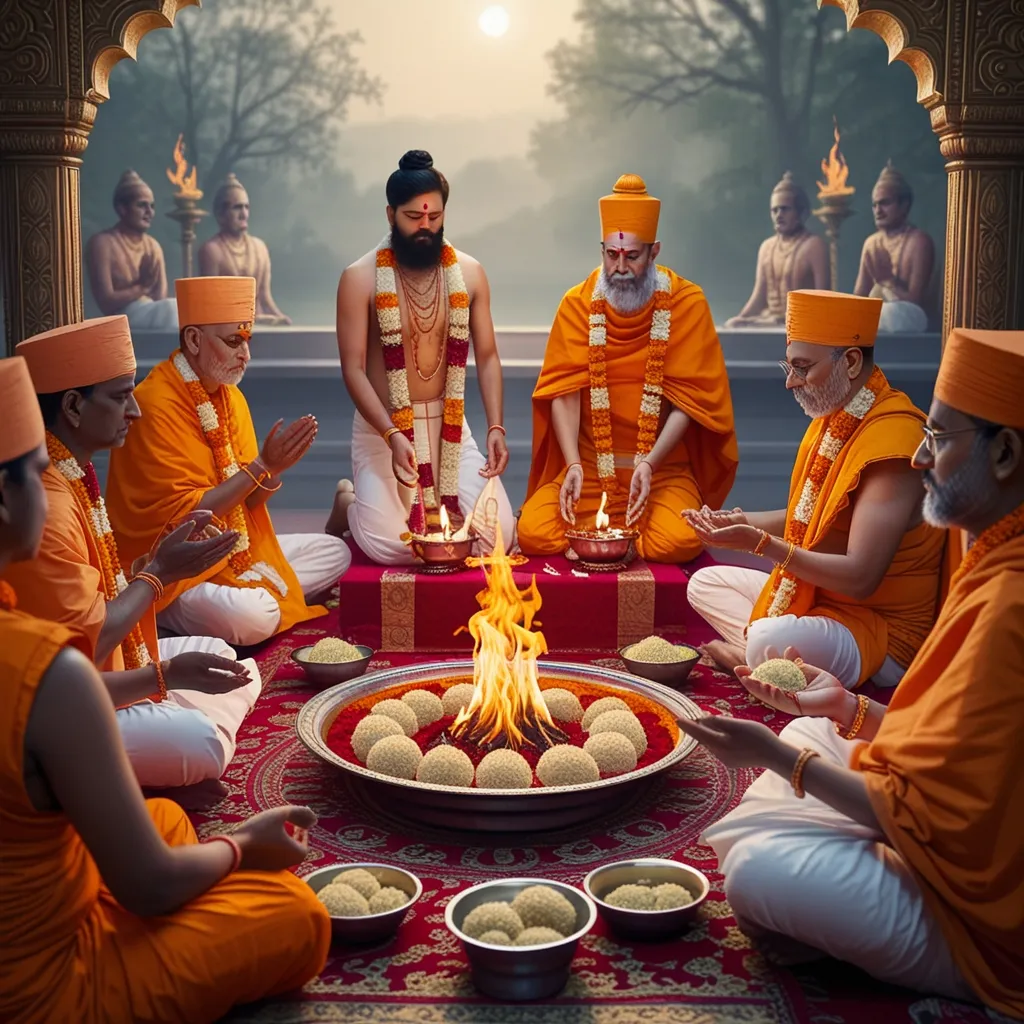The Samaveda, known as the “Veda of Chants,” occupies a truly special spot in the grand canvas of Hindu scriptures and music. Diving into its depths is like unraveling a musical treasure chest that has profoundly shaped devotional and Bhakti music in India. Embarking on this rhythmic journey gives a glimpse of how intertwined music and spirituality have been for ages.
Now, imagine the Samaveda as the Rigveda’s musical sibling. It’s basically a melodic interpretation of the Rigveda, merging ancient tunes with its verses. This marriage of chant and melody has cemented its place in Hindu musical traditions for millennia. Unlike many sacred texts meant to be meditated upon in silence, the Samaveda is composed to be sung. It’s as if it dances across the very lines of a musical score, beckoning chanters to engage not just with words but with sound and rhythm.
One of the most fascinating aspects of the Samaveda is its musical notations. They’re some of the oldest on the planet, written with either syllables or numbers, depending on the Samavedic school. The Samaveda exists in three main versions: Kauthuma, Rāṇāyanīya, and Jaiminiya, each holding fort in different parts of India. Notably, Jaiminiya makes its melody heard predominantly in the southern expanses of India, through places like Tamil Nadu and Kerala.
The influence of Samaveda on Indian classical music can’t be overstated. Both prominent strands of Indian classical music—North Indian and South Indian—trace their melodious roots back to this Veda. The structure and theory of Samaveda chants have carved the foundational principles of Indian classical arts. Instruments and styles that adorn Indian music today owe much to the musical guidelines detailed in Samaveda’s Gandharva-Veda, an offshoot that elaborates on music’s divine connection.
Then, there’s the Bhakti movement, a heartfelt wave of devotion that emphasizes a personal link with the divine. Its music, including Bhajans and Kirtans, draw heavily from the Samaveda’s usual repertoire of meters and melodies. These compositions aren’t just about musicality—they’re deep, soulful expressions of spiritual yearning, carrying the same artistic synthesis between sound and meaning found in Samavedic traditions.
Preserving the Samaveda hasn’t just been about ink and paper—it’s about oral transmission, where knowledge flows from teacher to student. This oral tradition is a living testament to ancestral wisdom, delicately balancing intricate melodic patterns and rhythms passed down through generations. It’s akin to a familial heirloom, where each rendition, each nuance is cherished and preserved in memory, and no single interpretation is hailed above all others.
Experiencing the Samaveda’s chants is akin to embarking on a spiritual pilgrimage through music. Its emphasis on melody and rhythm lifts it beyond the confines of language, creating a bridge to the divine through voice and sound. Intonations, accents, rhythms—all converge to create a hallowed atmosphere, inviting listeners into a space that transcends ordinary recital, becoming a divine communion through performance.
Across India, there are seven distinct traditions of Samaveda, each pulsating with its own unique rhythm and cultural hues. The Jaiminiya tradition of the southern regions, in particular, showcases this diversity splendidly, nestling comfortably in regional tapestries of culture and spirituality. Such variety ensures Samaveda’s presence is felt across geographies and communities, preserving its timeless essence while inviting newer interpretations.
The impact of Samaveda on Carnatic music, one of the jewels of southern Indian classical music, is unmistakable. Crafted from the theories and chants of Samaveda, Carnatic music thrives not just on devotional lyrics but also embraces compositions that might not be overtly spiritual. Its versatility and appeal echo the inclusive spirit of Samaveda, drawing listeners and practitioners from all walks of life, thus creating an enduring musical heritage.
The beauty of Hinduism lies in its embrace of many traditions, offering practitioners the freedom to voice their spirituality in myriad ways. This rich diversity is epitomized in the chanting of Vedic mantras, presenting a canvas for personal and authentic spiritual expressions. The Samaveda’s inclusive nature resonates with people choosing styles that align with their spiritual journey, thereby enriching this sacred tradition.
At its heart, the Samaveda stands as a monumental influence on devotional and Bhakti music traditions. Its legacy is etched in the melodies that resonate through both ancient and contemporary Indian music landscapes. The enduring emphasis on melody, rhythm, and oral traditions has kept Samaveda relevant through centuries, making it a keystone of Hindu musical heritage. As it continues to breathe life through its sacred chants, the Samaveda transcends language barriers, uniting souls in the boundless and universal language of music.






